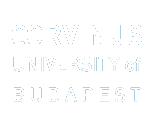Ábel, István, Lóga, Máté, Szabó, István Attila and Tóth, Orsolya Éva (2025) The competitiveness of the European Union in the light of human capital – what the Draghi report leaves out. Public Finance Quarterly = Pénzügyi Szemle, 71 (1). pp. 9-30. DOI https://doi.org/10.35551/PFQ_2025_1_1
|
PDF
- Requires a PDF viewer such as GSview, Xpdf or Adobe Acrobat Reader
158kB |
Official URL: https://doi.org/10.35551/PFQ_2025_1_1
Abstract
Research on the competitiveness nexus has long underpinned economic policy theory and practice. It has focused on finding technical solutions to questions about economic growth, welfare, sustainability, and many other equally pressing issues. One might think it is challenging to make new waves in an issue that has been so actively researched. However, former European Central Bank President Mario Draghi has managed to attract the attention of economists and governmental organizations in many countries with his recently published Draghi Report on competitiveness problems in the European Union and how they can be addressed, even such experts who had not previously looked at the issue in depth joined the discussion. We begin our presentation of the main findings of the Draghi report with some of the key takeaways from the US response. The report itself, dealing with the facts indicating that the European Union is falling behind the United States and China in terms of competitiveness, stresses that European countries need new measures and substantial investment to maintain and improve their competitiveness. The US authors we quote raise questions about the growth advantage of the US economy. They show that industrial production growth in the US has also slowed considerably, and that the EU’s lag is not dramatic. They argue that the lag is primarily explained by the strengthening of the dollar and demographic factors. There are also very different trends depending on the indicators used to measure it.In terms of productivity per hours worked, measured in terms of purchasing power parity, many European countries are ahead of the US growth rate. On average, European workers have shorter working hours and take longer holidays. The Draghi report touches on the quality and quantity of human capital, skills, and competencies in the context of the EU-US innovation gap. However, the report does not address potential workers’ physical and mental health. Absences from work due to physical and mental illness affect workplace efficiency and productivity. In the second part of our paper, we will explore how research on this topic paints a worrying picture. We present the actions that are necessary in this area. In another paper published in the Financial Time on November 1, 2024, Draghi (2024a) highlights the issue of his proposed significant public investment needs and EU fiscal rules. We conclude with a discussion of taxation and changes to fiscal rules.
| Item Type: | Article |
|---|---|
| Uncontrolled Keywords: | competitiveness, Draghi report, human capital, education, health, taxation, productivity |
| JEL classification: | F49 - Macroeconomic Aspects of International Trade and Finance: Other G38 - Corporate Finance and Governance: Government Policy and Regulation H25 - Business Taxes and Subsidies including sales and value-added (VAT) I15 - Health and Economic Development I25 - Education and Economic Development J24 - Human Capital; Skills; Occupational Choice; Labor Productivity |
| Subjects: | Finance |
| DOI: | https://doi.org/10.35551/PFQ_2025_1_1 |
| ID Code: | 11399 |
| Deposited By: | Alexa Horváth |
| Deposited On: | 12 Jun 2025 07:55 |
| Last Modified: | 12 Jun 2025 07:55 |
Repository Staff Only: item control page


 Download Statistics
Download Statistics Download Statistics
Download Statistics